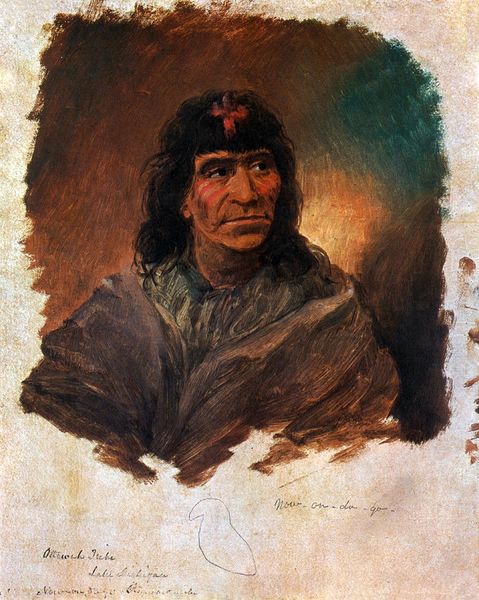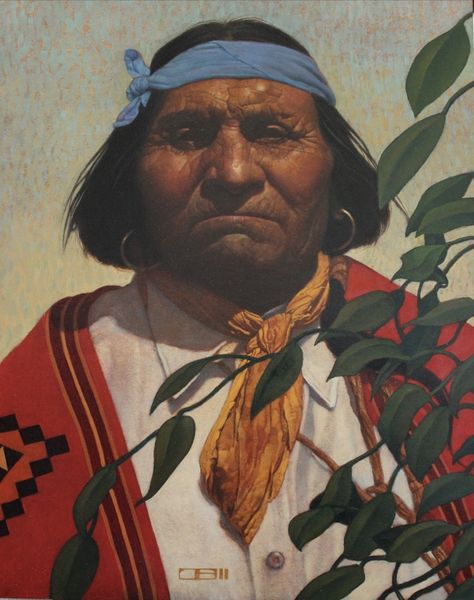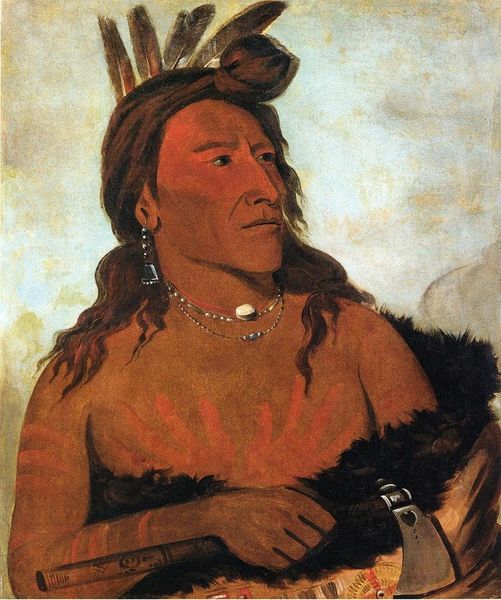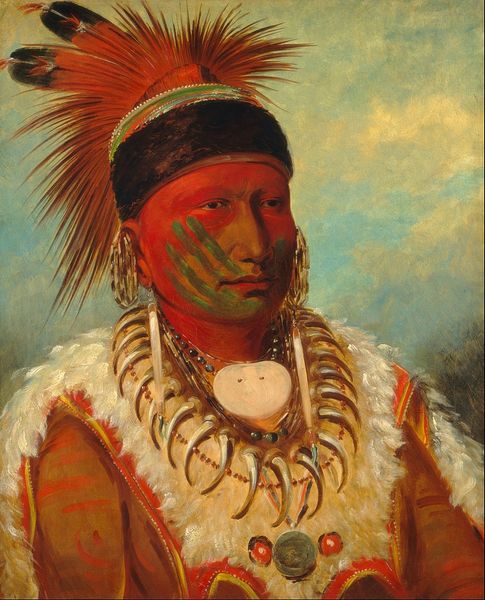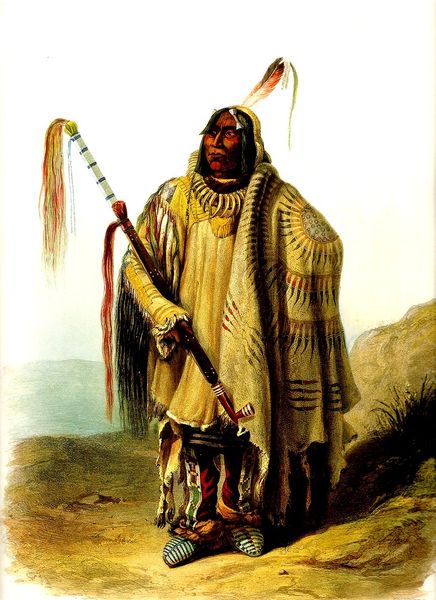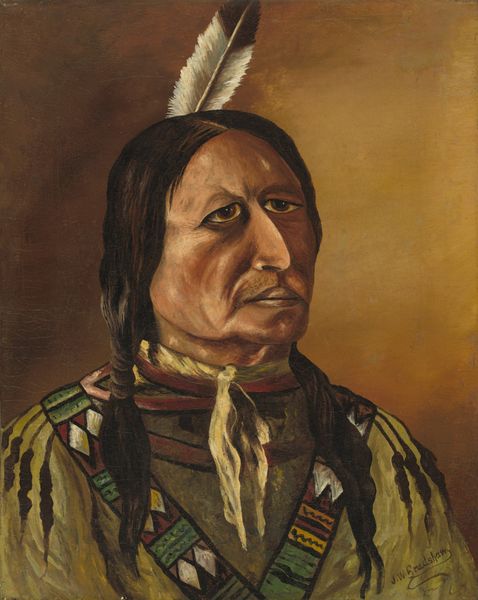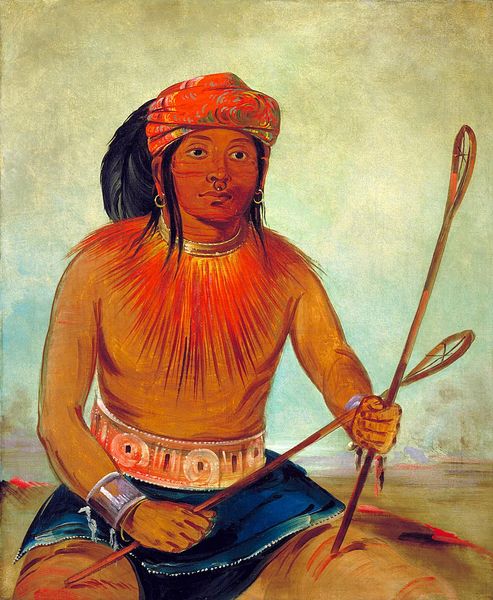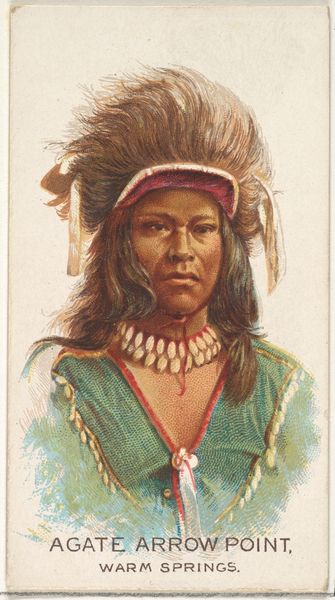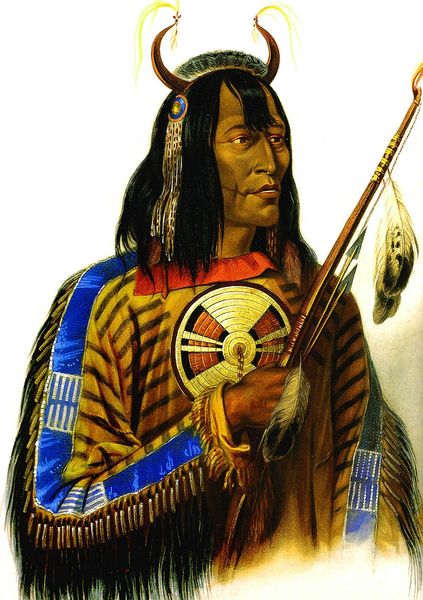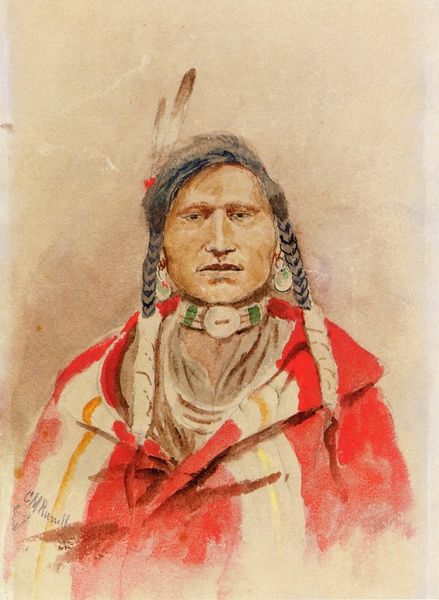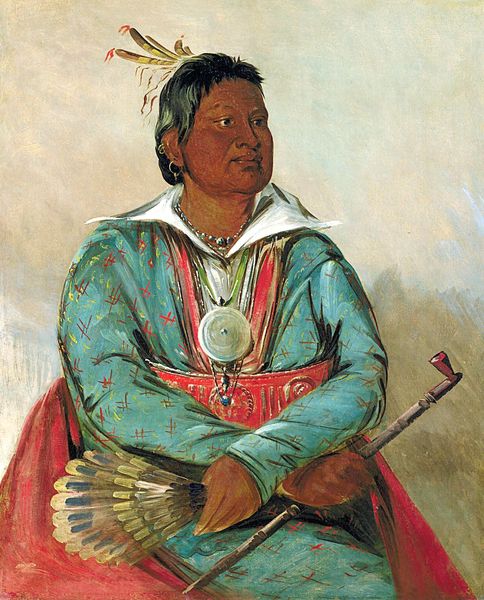
painting, oil-paint
#
portrait
#
painting
#
oil-paint
#
oil painting
Copyright: Public domain
Curator: Looking at this painting by George Catlin, completed in 1837, one immediately senses a palpable stillness despite the sitter's visible tension. Editor: Yes, there's a powerful immediacy in his gaze, and something about the cool palette lends a somewhat melancholic feel to it. Tell me, what more can you tell us about it? Curator: This is a portrait of Co-ee-há-jo, a Seminole Chief, painted during a period of intense conflict between the Seminole people and the United States government. Understanding that context is key: the forced removal policies deeply impacted Seminole identity. Editor: That conflict is subtle but visible. He holds the rifle in such a way. There’s pride and resolve in that firm grip, isn’t there? His turban, too—the patterns suggest intricate stories. The feather evokes power, and almost a declaration. I'm immediately thinking about how fashion creates power and influence, or resistance against something that attempts to erase it. Curator: Precisely. And notice how Catlin renders his gaze—direct, unwavering. But it’s important to consider the inherent power dynamics at play here. Catlin, a white American artist, is capturing the image of a Native American leader during a time of immense oppression. How does that gaze shift with this fact? It’s crucial to question whose perspective truly dominates the canvas, what gets depicted as strength versus resistance? Editor: I find the romantic style choice interesting, too, almost an idealization. And this, too, impacts interpretation as if an imaginary painting masks violent reality. Is it also true of other cultural depictions? Curator: Certainly. We have to consider that as the viewer our role also entails critically looking at historical context with contemporary perspective. It calls upon a broader need to create counter-narratives that are shaped by the very groups which were affected by violence. Editor: That's a great call to action. The image becomes a visual anchor, connecting the past with urgent contemporary conversations on sovereignty and representation. Curator: It really emphasizes that intersection between visual language and political power. Editor: Indeed, seeing this has deepened my sense of what is at stake. I can’t think of it outside historical context anymore.
Comments
No comments
Be the first to comment and join the conversation on the ultimate creative platform.
